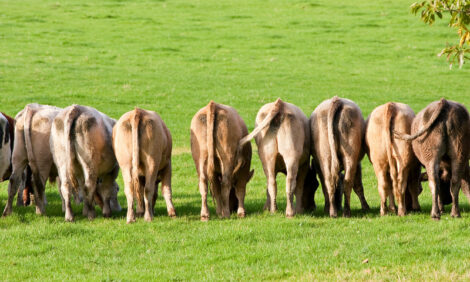



World Dairy Markets Tight in Last Quarter
US - The market sentiment flipped from bearish to bullish in the last eight weeks. After 16 months of steady price declines, the US drought served as the catalyst that turned the market around, according to Alan Levitt, Marc Beck and Brad Gerhke from the US Dairy Export Council.Adverse weather in Europe and lack of product from Oceania during their off-season only compounded the sudden fear that supplies would be short in the months to come.
We expect US milk production to run below year-earlier levels through at least the first quarter of 2013, a development that will hit NDM/SMP supplies hardest.
Significantly, there are no buffer stocks to draw on. The United States handles nearly 30 per cent of world SMP trade, so a potential gap in supply, even as demand remains good, has instilled more urgency into buyers at a time the markets are typically quiet.
As noted, supplies have tightened in Europe as well. Milk production is now running about even with a year ago, after unprecedented four per cent growth over the previous two years. And high feed costs also are slowing milk output in Argentina, where cropping offers better returns.
In contrast, Oceania is poised for another banner production year. Conditions are favorable and plants are gearing up. El Niño does not look like it’ll be a big factor this season as earlier feared. The SOI (southern oscillation index) has moved back into neutral territory. A weak monsoon season in India sparked fears they might run short, but milk supplies there are still excessive and they are no threat to pull in imports any time soon.
Still, overall global supplies are expected to
be tight through year-end and into 2013. Manufacturers
are pushing back deliveries. Orders
have been good, leaving little uncommitted
supply. A strong season in Oceania will relieve
some of the pressure, but prices still have
room to come up before buyers push back – at
least another $200-$400/ton for milk powder,
cheese and butterfat.
These supply pressures come in the face of
solid demand, particularly in emerging markets.
Purchases from China, the Middle East,
Mexico and Southeast Asia have been strong
in 2012. Lower prices in the first half of the
year helped stimulate use and offset the effects
of slower GDP growth in both developed and
developing countries.
We caution, however, that as higher commodity
prices are passed through to consumers
and as overall food inflation becomes more
critical in developing countries in the next few
months, consumer purchasing power will be
eroded. Meanwhile, though manufacturer
inventories are scant, end-user holdings are
in better shape, which could temper buying
surges in the fourth quarter and into 2013.
Though the market is justifiably focused
on the near-term supply-demand balance
and securing coverage for the next two quarters,
we expect the impacts of the 2012 US
drought to linger well into next year. Milk
production costs have moved to a higher level
for the foreseeable future. Will the world need
the milk solids badly enough that it will pay to
ensure an adequate supply?
TheCattleSite News Desk


